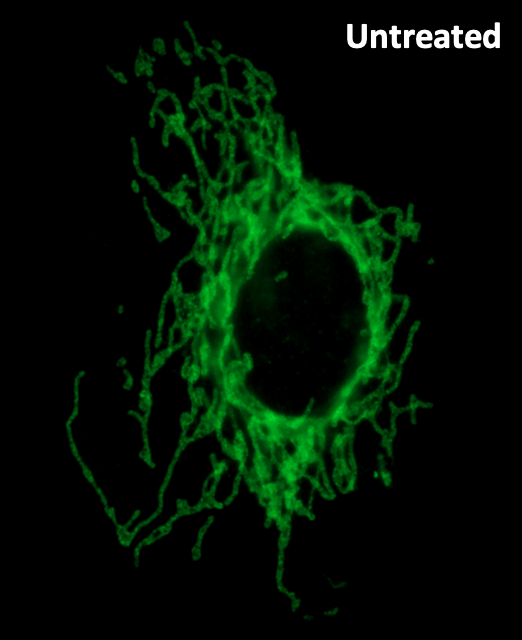Understand how your drug shapes the mitochondrial network
Mitochondria are organised in a structured network. These dynamic organelles act as highly flexible central metabolic hubs, adapting to the cell’s energy requirements and to various stressors. The dynamics of this mitochondrial network play a pivotal role in determining whether a cell will proliferate, differentiate, enter quiescence, or die.
Mitologics’ technological MitoPathway® and MitoXpert® platforms offer a range of assays to characterise the mitochondrial network and its dynamic processes.
Mitochondrial mass is strongly regulated by the biogenesis-mitophagy equilibrium. Biogenesis entails replication of mtDNA, associated with transcription and translation of mitochondrial proteins coded by the mtDNA and nuclear DNA. Mitochondrial quality is maintained by mitophagy, a form of degradative autophagy that eliminates overabundant or damaged mitochondria. The mitochondrial network also displays a certain plasticity, thanks to the differential implication of fusion and fission. It is highly connected to energy generation, metabolite biosynthesis and apoptotic processes.
Quantify the mitochondrial mass in pre-clinical biological samples.
Analysis of citrate synthase activity in adipose tissue of chow diet (CD) and high fat diet (HFD) mice as an indicator of mitochondrial mass. Citrate synthase enzymatic activity was measured by spectrophotometry (OD 412 nm) after 1, 2 and 5-weeks in 5 mice per group (Pini et al., 2021).
Chronic diseases such as cardiomyopathy and heart failure, neurodegenerative diseases, and metabolic disorders have been linked to altered mitochondrial dynamics, and loss of mitochondrial mass. In addition, changes in mitophagy fluxes related to carcinogenesis, metastatic processes, drug resistance, and cancer stem cell survival are associated with imbalances between fusion and fission, leading to the fragmentation of the mitochondrial network. Such fragmentation has been identified in many types of cancer.
Our MitoPathway® and MitoXpert® platforms provide consolidated data allowing you to:
- Evaluate the impact of compounds on mitochondrial network dynamics in whole cells: fusion/fission,
- Detect the protective properties of compounds that preserve mitochondria numbers and the quality of the mitochondrial network in pathological models,
- Assess how compounds affect mitochondrial turnover – biogenesis and mitophagy fluxes – in tumour cell models,
- Quantify mitochondrial mass in preclinical and clinical biological samples.
Evaluate the impact of compounds on mitochondrial network dynamics in whole cells.
Induction of mitochondrial fission in NCI-H460 tumor cell line by treatment with the uncoupling agent carbonylcyanide-3-chlorophenylhydrazone (ClCCP). Fluorescent microscopy is performed after labeling of mitochondrial network with anti-Tom20 antibody.




